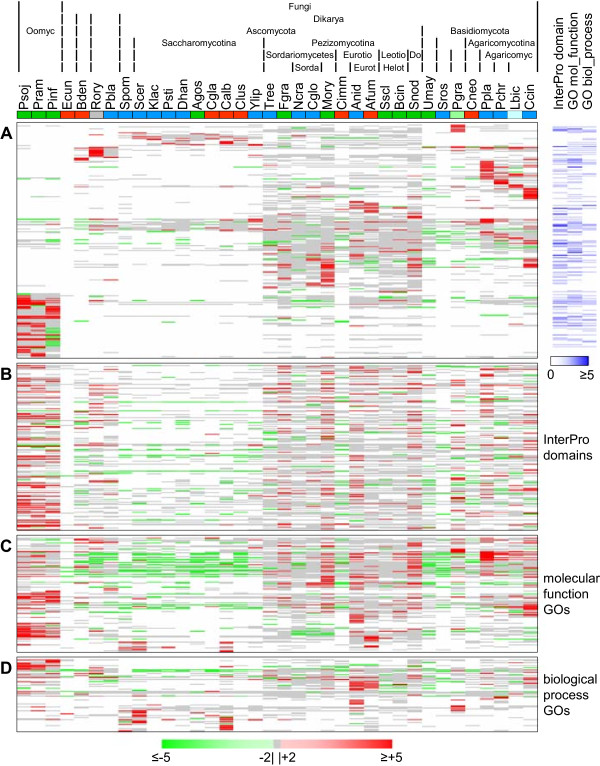Figure 5.

Expansions and contractions in protein clusters and in InterPro domain and molecular function and biological process GO term abundances. Heatmap of protein clusters (A), InterPro domains (B), molecular function GO terms (C) and biological process GO terms (D) represented in at least three species that show an expansion of more than twofold (red) or a contraction of less than half (green) of the median of the abundances per species for the respective entry type. Increasing level of expansion or contraction per cluster/InterPro domain/GO term and species is indicated by higher color intensity. Less than twofold expansion or contraction is shown in monochrome grey. White indicates no protein in this cluster or occurrence of this InterPro domain or GO term in this species. Species (columns) are color-coded by lifestyle: dark blue = saprophytes, dark green = plant pathogens, red = animal pathogens, grey = polyphage (R. oryzae), light blue = Ectomycorrhiza (EcM, L. bicolor), light green = obligate biotroph (P. graminis). Species abbreviations are given in Table 1. Protein clusters (A) with assigned InterPro domains, molecular function or biological process GO terms are provided on the right where the intensity of the blue color indicates their abundances. The heights of the heatmaps correspond to the numbers of individual protein clusters/InterPro domains/GO terms represented in the respective maps.
